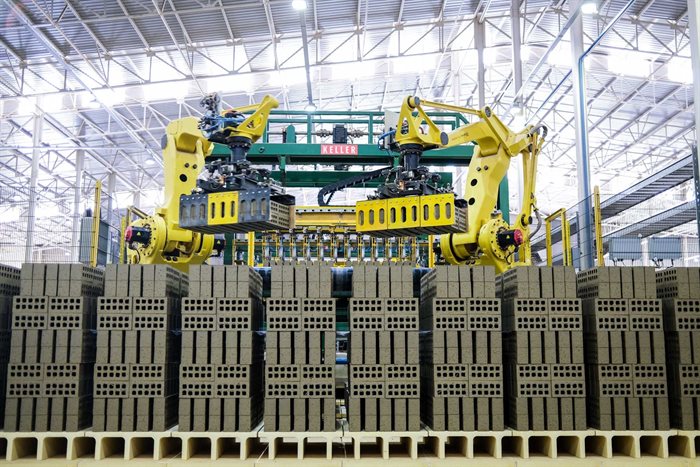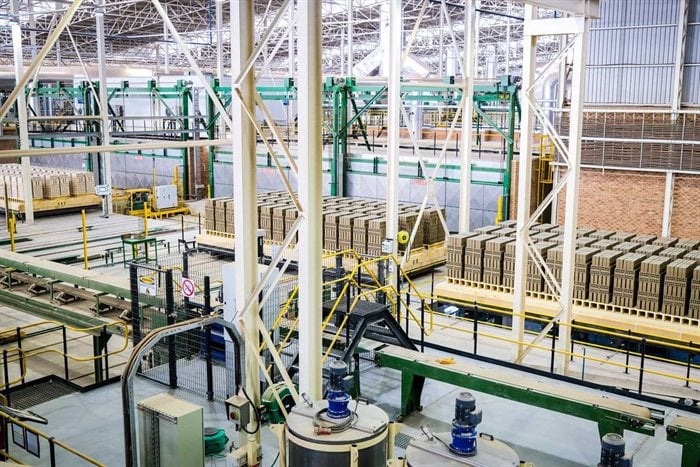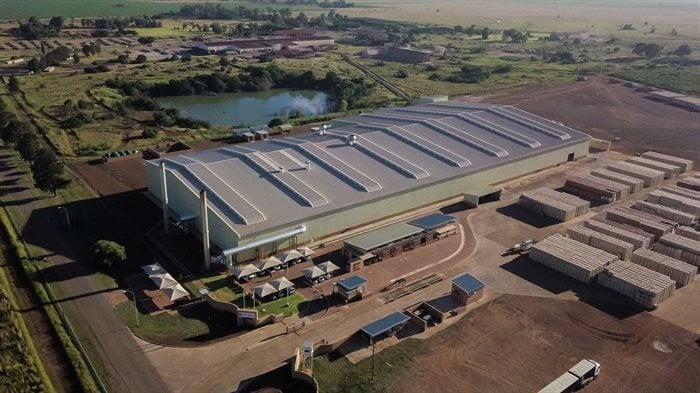






The new kiln technology deployed at Kwastina is what really sets it apart, allowing Corobrik to now introduce different effects on its bricks. "We can match what we made previously, but what we can also do is get a new range of natural colours from the clay," explained Nick Booth, CEO of Corobrik, in an interview with Bizcommunity.
Broadening its business offering even further, the factory's new glazing technology means it can now produce bespoke products to meet architects' or specifiers' needs. Kwastina can produce any colour within the range of its glaze supplier. "And that's very different to what we've done previously," said Booth, "where we've been totally reliant on just the local clay nearby to the factory to give our colour range."

While bespoke products have become more commonplace in the last 20 or 30 years in the rest of the world, this is a first for South Africa, he said.
The factory is fully automated, meaning no human hand touches the product until it arrives on site. This allows for a more consistent, quality end-product and has the added benefit of reducing Kwastina's carbon footprint.
"We get an energy saving in excess of 50% of what we would have got previously on the old kiln technology that's in place in various factories in South Africa," said Booth.

Its efficiency also means the new factory is able to run at lower waste levels. "The way we utilise the raw materials means we're able to generate less waste from the mining side and utilise more of the raw materials that we mine, so we don't discard as much."
While the new factory is fully automated, no jobs were lost, according to Booth. In fact, the plant has created more downstream opportunities as the products are now able to reach a wider market than previously possible. This boosts jobs within the logistics chain and, ultimately, more builds means more employment on sites, said Booth.
The competitiveness of the product also means it has the potential to replace materials like concrete blocks. "You lay more bricks than you do concrete blocks and, therefore, you're creating more employment," he said.

Despite a delay due to the Covid-19 hard lockdown in 2020, Kwastina was delivered on budget. Booth attributes the project's success largely to the people involved.
"When you're in an abnormal situation, as we've had with the hard lockdown and with Covid, the only way you can get through that is by the attitude and the hard work of individuals, and we've been very lucky with the people that we work with."

Overall, this is an exciting step change for South Africa, he said: "I always believe that you build manufacturing facilities/factories to be globally competitive, and here we have a factory in South Africa that is globally competitive."
Kwastina's competitiveness is right up there in meeting the international benchmark, and that can only be good for South Africa's economy, said Booth.
